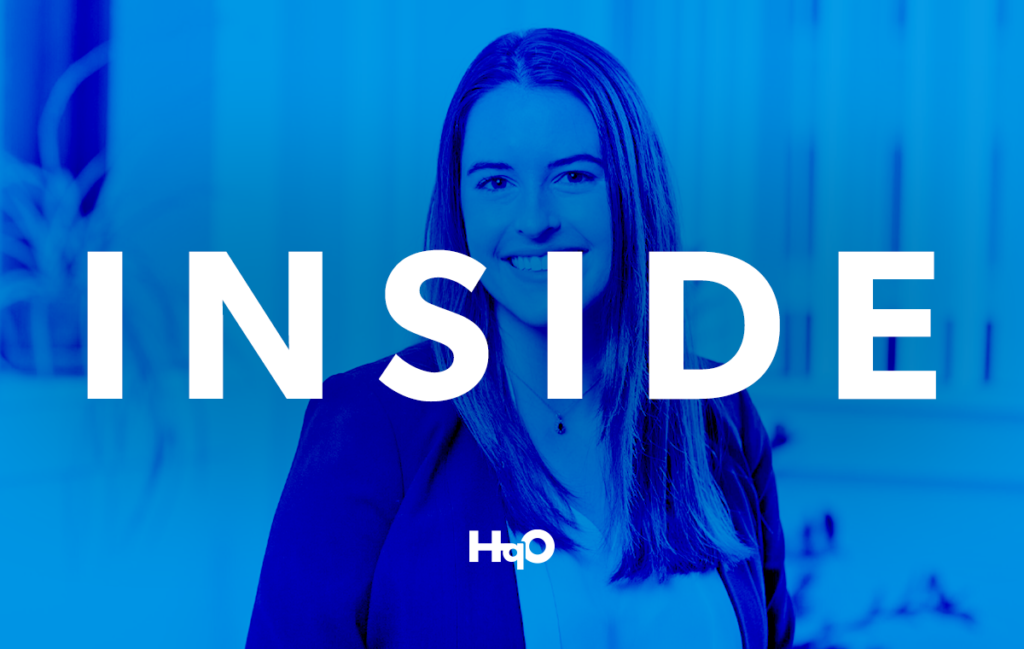When times are changing, adaptability is key. The COVID-19 pandemic has thrown a curveball into every major market, particularly impacting those which include the public realm, such as the commercial real estate (CRE), retail, entertainment, and food industries.
Several months ago, this was the situation for Roxbury, Massachusetts-based distillery, Bully Boy Distillers. The distillery — which has been successfully serving local communities for nearly a decade — faced the same concerns as its peers. Due to fears associated with the transmission and spread of the virus, many customers were opting out of indoor, densely-packed spaces, and relying more on mobile ordering services for their dining needs instead.
Bully Boy’s future appeared bleak. Despite being voted the #1 cocktail bar in Roxbury, their building’s environment was dark and intimate — conditions that hardly supported proper social distancing and occupancy requirements. However, backed by the foresight of their management team and a little creativity, they were able to completely transform their business to accommodate a changing industry.
It started with a revised focus on customer needs. Bully Boy’s management understood that despite the pandemic, customers still wanted to get out of the house and safely sit for their favorite drinks. With this in mind, their team cleared out the storage lot located across the street from their main building, transforming it into an outdoor “Cocktail Garden” that their customers could enjoy while still following updated health and safety regulations.
Only a few small renovations to their existing storage space proved to be a massive win — by spacing out chairs and tables, providing ample shade, and managing reservations through their tech partner OpenTable, they have been able to capture the demand for safe socializing among Bostonians. To this day, reservations for Bully Boy’s “Cocktail Garden” remain booked out weeks in advance. Even once the pandemic ends, their outdoor space will surely become a staple among its business by continuing to generate new revenue for the distillery in future seasons.
Just as Bully Boy capitalized on the new demands of its customer base, suburban CRE leaders can follow suit. Physical office buildings still hold value despite the pandemic, and can complement hybrid work models that many tenants have already adopted. Environments commonly associated with office buildings — especially those in denser, urban locations — have increased the fear of transmission and the need for safety among much of our modern workforce.
However, those who adapt their businesses and physical spaces to meet the needs of their customers can still create immediate revenue, brand equity, and long-term revenue opportunities. It is for this reason that suburban landlords in particular have a moment of opportunity to reimagine their value for tenants seeking all the benefits of an office building, but in the safety of a less-populated destination.
As more tenants seek to move out of central business districts (CBDs), landlords with suburban offices can adapt their existing portfolios by offering benefits to support both short- and long-term needs. Ameliorated by technology partnerships, these strategies will not only add value for your end users by helping you make more educated, data-driven decisions on the tenant experience, but will also increase leasing activity and net operating income (NOI) for your entire office portfolio.
Changing Our Views of the Office
Though the pandemic hasn’t necessarily changed the benefits of physical office buildings, it has certainly proven them. Many tenant companies still believe in the value of the office because of its key role in fostering productivity, culture, and community, and want to safely return their employees to the workplace. Recent Colliers International Research supports this, stating that out of 5,000 respondents across 18 global industries, 49% of employees said they would like to limit their remote work experiences to just two days a week after the pandemic subsides, whereas only 12% said they’d like to work from home four or more days a week.
However, since the pandemic has also altered the ways companies make decisions about where employees can and should work, this transition is taking place alongside growing hybrid work models. Therefore, CRE landlords need to partner with tenant companies to help draw workers back into the office in safe ways, while making it a place people actually want to work.
According to data collected by the CBRE Research Client Survey in June of 2020, 70% of respondents claimed that more flexible work is expected, but 42% still suggested that the importance of the physical office will only decrease slightly. Additionally, roughly one in four office employers are planning to shrink their office space by a minimum of 20%, with about 16% planning to move jobs out of the city.
This has led tenant companies to explore new, creative office space models that afford employees the ability to choose where and when they work based on personal preferences. An example of this includes hub-and-spoke models, where companies add work-near-home and central head office spaces in the suburbs to supplement their downtown presence, thus resolving concerns around potentially risky commutes and work-life balances.
John Williams, Head of Marketing at The Instant Group, explains this phenomenon in a recent post about the future of work:
“Since the start of the pandemic, having spoken with over 50 heads of corporate real estate across the globe as part of our Agile CRE Think Tank (ACT), we estimate that we will see up to 75% of firms move towards a more agile real estate strategy. This is not the death of the office, but the introduction of a more network focused office set-up using a combination of workspaces including the central office, working-from-home, and the work-near-home office.”
Capturing the Demands of COVID-19
One of the largest concerns about inner-city office space involves the fear of transmission via public transportation and general city congestion — factors that are reduced or eliminated at suburban office spaces. In fact, a typical suburban office building has multiple features that support the health and safety needs presented by the pandemic: they have parking, more indoor space to spread out building occupants, and more outdoor space to allow employees to socialize in a safe, enjoyable manner.
This additional space, coupled with greater vacancy in the suburbs, also means that suburban landlords have the chance to spearhead a movement in providing commercial tenants more flexible leases. With coworking and hybrid work models increasing in popularity, landlords will be able to quickly turn their underutilized suburban office buildings into the flex space that tenants and employees need.
UpFlex co-founder and Chief Product Office Ginger Dhaliwal sat down with Bisnow and explained this mandatory transformation to office portfolios in order to adapt to the new needs of the market.
“We’re all working from home, and we know the challenges, and sometimes you need to escape to flexible space for a few hours during the day,” she said. “Those are new considerations that our corporate clients are looking at — giving employees choices based on how they want to work. I think that’s a trend that’s going to live past COVID. We also hear that employees are scared to go back to high-density office spaces. Having flexible options is what they’re looking for now. Suburbs are the perfect place for that because they’re close to where people live already. People can work from home, or headquarters, or satellite flex space.”
How to Differentiate Your Suburban Workplace
In such a competitive market, it’s not enough to be a suburban landlord. You also need to stand out. Meeting the needs of a COVID-era prospective tenant population is dependent on a polished office re-entry strategy, enabled through technology and nimble enough to keep up with tenant needs once they return. When it comes to the phases of returning to the workplace, landlords will need to address concerns in the areas of communication, safety, logistics, and health.
Keeping Tenants Safe
To create a seamless transition back to the workplace — while addressing tenant needs and supporting new hybrid remote work models — HqO can help landlords through our HqOS operating system. All HqO clients now have access to Capacity Manager, a management system for office capacity that ensures a safe work environment for tenants and their employees as they enter the “new normal.” They also have access to the Building Population Report, which centralizes key tenant and operational data into one place so owners and property teams can operate their buildings effectively, reduce churn, and maintain a profitable portfolio. Both features, which provide important data on tenant and employee engagement, can also assist with contact-tracing needs among growing COVID-19 concerns.
Maintaining Communication
Without tenant experience technologies like HqOS, landlords have little to no access to their end users — especially now that the workforce is more spread out than ever. Instead, they rely heavily on emails or other antiquated forms of communication. These methods are no longer reliable or efficient for today’s CRE landscape. In a world where mandatory health and safety protocols are vital for any building, landlords will need the ability to send out custom push notifications and building policy updates to tenants and their employees.
Elevating the Workplace Experience
The HqO app also allows the workforce to reconnect through virtual or in-person amenities and programming, engaging safely with pre-vetted best-in-class technology partnerships via our Marketplace.
Our technology integrations can help suburban landlords create in-office experiences that match or exceed those provided by office owners in CBDs, thus enabling them to continue to sign and retain new urban tenants even after the fears of COVID-19 are over.
“It’s got to be good quality buildings,” Transwestern Executive Managing Partner Steve Pumper said in a June Bisnow webinar. “You don’t want to be the low-cost provider, you’ve got to have good amenities, you’ve still got to have a good vibe that people feel good about working in.”
Making Data-Driven Decisions
During this time, landlords need to evolve their thinking: retaining customers will no longer rely on the construct of a contract, but instead on earning loyalty through providing a great experience to each individual that uses their property. This means that a revised focus on the tenant experience is now a key value driver for CRE moving forward, and prompts landlords to try to understand their end users more than ever before.
To collect these insights about tenants and employees, property owners will also need access to granular data. Digital technologies, such as our end-to-end operating system HqOS and our smart data model called the Digital Grid, are designed to analyze multiple human behaviors throughout any asset, then help determine what the data can tell owners and tenants about employee needs. It can also compare those insights to other similar and nearby buildings, helping inform decisions that previously had to be made with little or no data.
This type of engagement establishes what we refer to as a virtuous feedback loop. Having such significant intelligence on the end user of your product helps create a better user experience, which in turn increases customer engagement and continues to provide you with more useful data. Real-time feedback ensures the longevity of office buildings by giving market leaders the informed, competitive edge they need.
By strategically creating leasing and retention differentiators in the short-term, suburban landlords can guarantee market success in the long-term.
The Future of CRE is Flexible
Combining a focus on the tenant experience with flexible leasing strategies during the pandemic can generate premium onsite experiences for the future of your suburban office portfolio. When it comes to guiding tenants and their employees through the uncertainty of the pandemic, landlords with suburban offices can take advantage of a unique opportunity to transform their existing assets and generate immense value in both the short and long terms.
The effects of the pandemic will have a lasting impact on tenants and their workplace strategies, so landlords need to determine ways to remain responsive and tenant-focused to solidify their place in the market. Whether tenants are looking for a safer commute, a less densely populated location, or more flexible work models, suburban offices can not only improve workplace culture, but also win new tenants moving out of CBDs, boost leasing activity, and generate new, lasting income.
Bully Boy Distillers seized a moment of opportunity by leveraging their existing resources, such as reinventing their parking lot and storage area to adapt to a changing market. In the same manner, landlords can use their existing assets to win this moment.
To learn more about how HqO’s data and technologies can strengthen your suburban office building portfolio, schedule a demo today!



